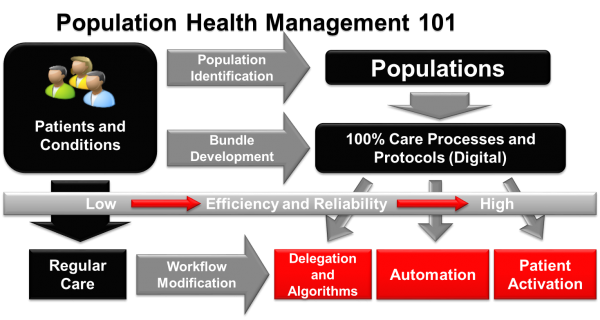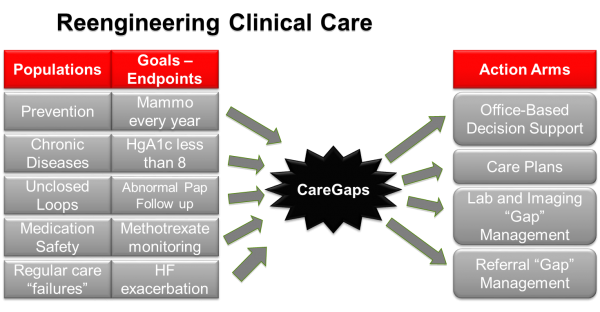At the Fourteenth Population Health Colloquium in Philadelphia, Perficient’s own Lesli Adams, MPA, took the stage with Sanjay Udoshi, MD and Brady Davis to present “Shared Accountability: How Informatics and Data for Clinical Decision Workflow engages Consumers on the Quality/Cost Equation.” This Mini Summit presentation was sponsored by Oracle Health Sciences and Perficient. The kick-off of the presentation was fun because it introduced the speakers as a business analyst geek (Lesli), an innovation and strategy guy (Brady) and a doc in the box (Dr. Udoshi). The presentation was targeted at the opportunities for quality improvement and cost control including wellness and chronic disease care gaps. At the risk of seeming biased, this presentation was one of the more practical, down to earth approaches at this week’s Colloquium event.
Why do I believe that? Well, I felt that many of the attendees at the Colloquium were seeking real how-to knowledge. Not that the big healthcare organization’s experience in implementing population health management aren’t valuable insights, but there was a lot of buzz about whether population health management can be done in a cost effective manner, and this presentation addressed the type of informatics required to change traditional approaches. The first step was to outline the process in a slide called Population Health Management 101. The key concept was moving paper processes for care management to a digital platform to analyze and manage costs, see figure 1.
Figure 1. Population Health Management 101
Figure 2. Re-engineering Clinical Care
The second idea was to re-engineer clinical care to identify and manage care gaps. The first step is to identify the key populations to be managed, then determine the key Goals for that population, and finally to manage addressing the gaps in care or Action Arms (Figure 2). Note that different populations have unique goals but subsequently could have common Action Arms. To address creating the care gaps and related Action Arms, the healthcare organization has to have a strategic vision for these target populations and combine that with the right tactical tools, namely informatics. The challenge of creating these informatics isn’t simply addressed with technology tools, but requires several key steps including:
- Structured Data Capture vs Natural Language Processing (NLP)
- Diagnosis Naming Conventions
- Establishing the Digital “Gold” Standard”
- Influencing the Problem List
- HCCs and Chronic Disease Management
- Best Practice Alerting and Health Maintenance Modifiers
- Guideline Based Bundles and Closing Care Gaps
Addressing Care Gaps is very practical advice for healthcare organizations seeking to really manage populations. Creating informatics solutions that support closing preventive, chronic and restorative care gaps will drive health care value for patients and health plans alike. Creating these informatics requires data mining, process re-engineering and the ability to extract data from modern electronic health record systems. Building patient-centric plans of care based on this process will need to be supported through proactive outreach as well. The key is applying technology tools in novel ways to enhance shared decision-making between the clinician and patient.
Lesli Adams outlined what I see as the key factor to population health management: cost management. The integration of clinical information and financial data is key to cost management and often this data resides in silo’ed or separate software applications. The ability to manage costs by having standardized pathways, then examine costs at a Patient Level will lead to better decision-making and more cost effective care. Putting the disciplines in place to examine physician variability against the standardized pathways is the enforcement technique to bring costs under control. When organizations commit to collecting and cleaning this level of costing information, then profitability reports by service line, DRG and Physician become reliable tools for key decisions about operations. One of the highlights of the presentation was micro-costing examples to highlight the key decision points for clinicians.
Lesli Adams will be presenting at the Oracle Industry Connect event on Tuesday and Wednesday, March 25-26 in Boston. For more information on Perficient’s informatics offerings, especially related to Population Health Management, please contact us.


